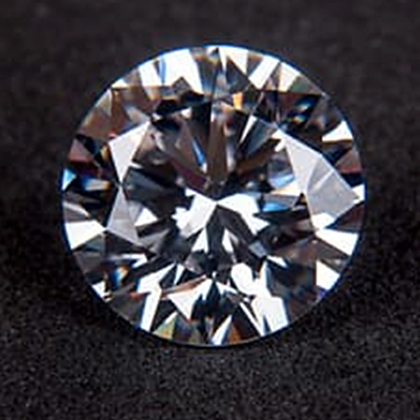
Do you have a diamond ring on your finger? If so, take a second to look at it. A diamond is, without a doubt, your most ancient possession.
Scientists have shown that gem-grade diamonds were created between 1 and 3.5 billion years ago. The diamond on your finger could be nearly as old as Earth itself.
Diamonds form deep within the planet, 100 miles down or more, underneath the continents. There, the pressure, temperature, and chemistry of the upper mantle create the perfect environment for diamonds, at 2000°F.
So how did they get to the surface? Through ancient eruptions. Jets of mantle were propelled by expanding gas, some from 400 miles within the earth—far deeper than modern-day volcanic eruptions.
The eruptions blasted through these diamond zones and carried small quantities of diamonds up with them, in shafts we now call kimberlite pipes. But less than 1% of the 6,000 pipes we’ve discovered have produced diamonds economically.
All we see of the pipes today are their carrot-shaped roots, which is where we dig our most productive diamond mines. A smaller number of diamonds erode out of the pipes and end up in streams, beaches, and undersea deposits. Offshore of Namibia, giant ships vacuum them from the seafloor.
The ancient origins of this gemstone give a whole new meaning to the phrase, “a diamond is forever.” Perhaps it’s no coincidence that diamonds have come to represent everlasting love.
Background
Synopsis: All diamonds were formed more than a billion years ago in the upper mantle below the thickest roots of the continents. Millions of years later, they rode to the surface as deeper-mantle-sourced kimberlite magma punched through the layer where they formed and blasted to the surface at up to 20 mph. There is no recorded history of these extremely violent eruptions; the most recent was about 12,000 years ago, so mankind has never seen one. Only 1 in 200 of the deposits formed by these eruptions contain commercial diamonds.
- Natural diamonds form at very high temperatures and pressures. Tiny low-grade diamonds have been found in small quantities at asteroid impact sites or in meteorites, as well as in rocks that were initially subducted as they moved below other plates along plate boundaries and were then exposed at Earth’s surface.
- All gem-grade diamonds were formed in the mantle below the thickest, most stable areas of the continental crust. This stability zone for diamonds occurs at least 90 miles below Earth’s surface, where the chemistry and pressure-temperature conditions are, as Goldilocks would say, just right. The giant keels of the continents extend deep into the mantle and moderate the temperatures and chemistry of the upper mantle in this very high-pressure environment. They create a perfect climate for diamonds at just 2000°F!
- So how long have diamonds been down there? Most gem-grade diamonds on Earth formed in the upper mantle between 1 and 3.5 billion years ago. The ancient diamonds made their way to the surface of Earth between 1.2 billion and 32,000 years ago as intense volcanic eruptions blasted through the diamond “Goldilocks zone” and took them along for the wild ride to the surface at speeds possibly reaching 20 mph. These eruptions were propelled by expanding gas and sourced from 120 to 400 miles deep, where pressures are 60,000 times greater than at the surface of Earth. That’s much deeper than most modern-day volcanic sources!
- All we see today are the carrot-shaped roots, which we call kimberlite and lamproite pipes, of the explosive volcanic deposits. The deepest of these is the Mirny mine in Siberia; it is more than 1700 ft deep and 3900 ft wide. Its steep profile creates downward airflow so strong that helicopters are not allowed to fly in its airspace.
- The youngest of these explosive mantle-sourced deposits is only about 12,000 years old, so there is no recorded history that describes what it was like when the eruption occurred at the surface.
- Diamonds eroded from these deposits are often found concentrated in nearby streams, beaches, and undersea deposits. Offshore of Namibia, giant boats vacuum them from the seabed.
- Only about 30 of the more than 6,400—just 0.5%—kimberlite and lamproite pipes discovered contain economic diamonds.

